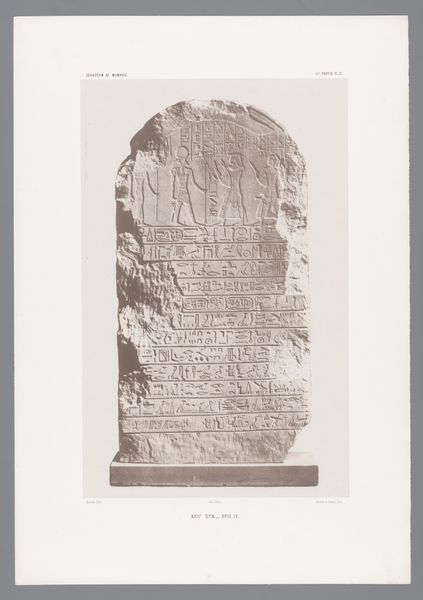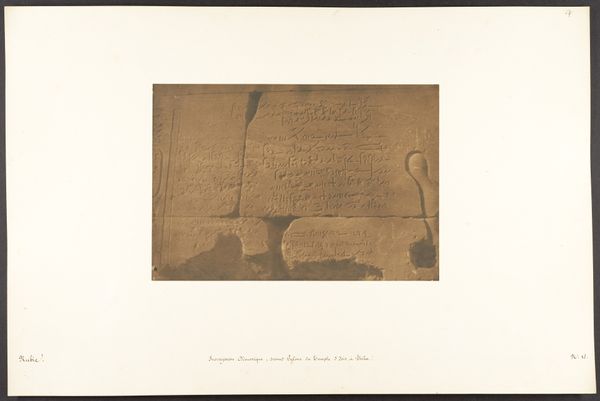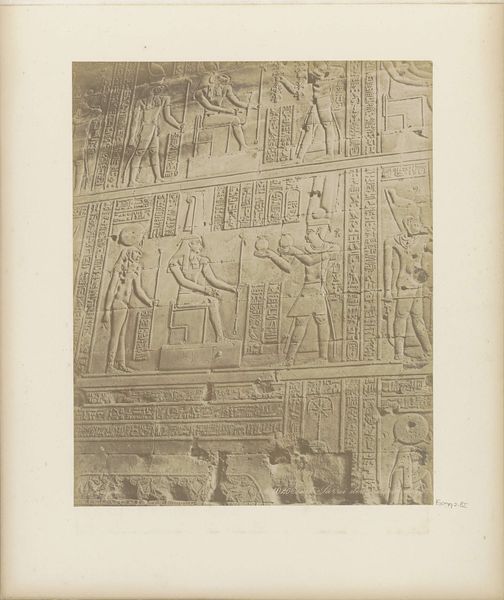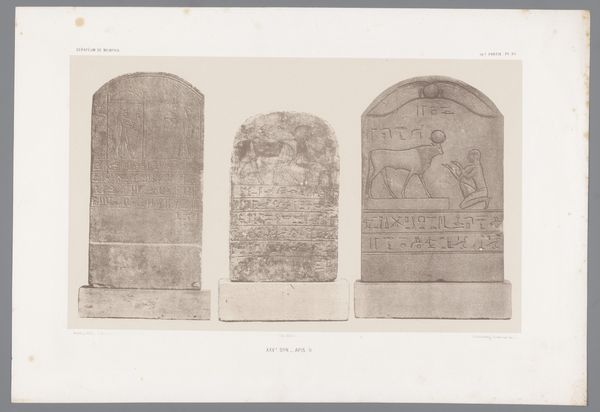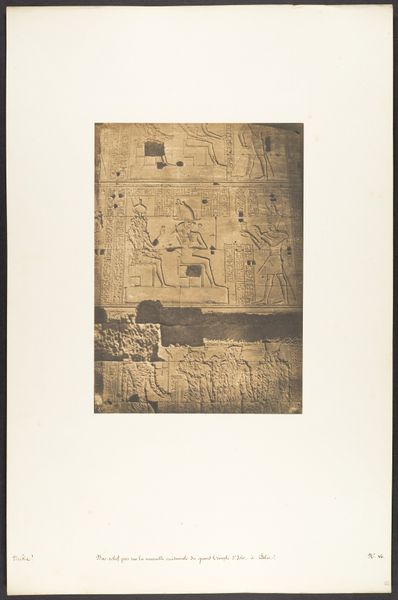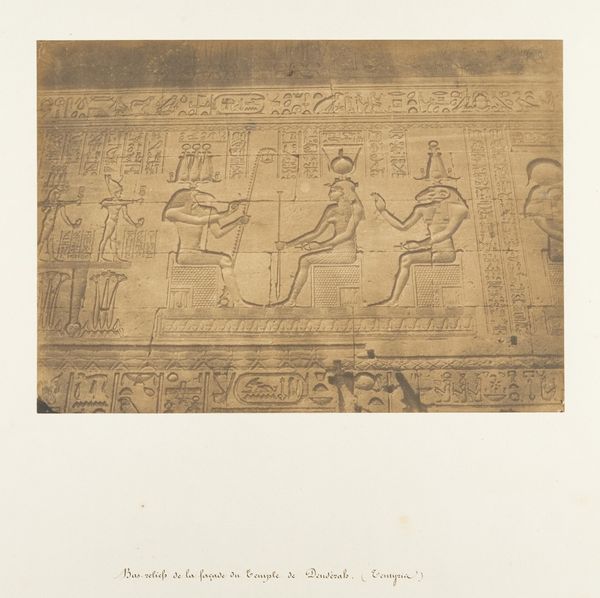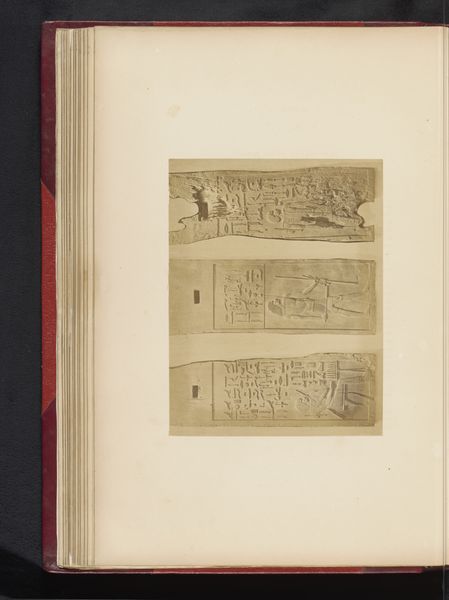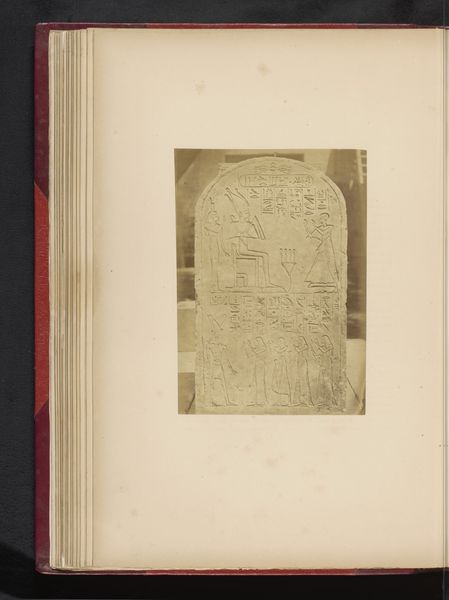
Stèle met hiërogliefen, gevonden bij het Serapeum te Memphis 1852 - 1857
0:00
0:00
drawing, print, relief, photography, engraving
#
portrait
#
drawing
# print
#
relief
#
ancient-egyptian-art
#
photography
#
ancient-mediterranean
#
engraving
Dimensions: height 331 mm, width 240 mm
Copyright: Rijks Museum: Open Domain
Curator: Looking at this photograph, the hieroglyphs seem so otherworldly, dense with a kind of lost meaning. Editor: This is Charles Marville's photograph, dating from 1852 to 1857, of a stele discovered near the Serapeum in Memphis. Curator: "Stele with Hieroglyphs, found near the Serapeum in Memphis," a truly descriptive title. You know, I immediately zoom in on the process. Think of Marville lugging his equipment to document this piece of stone! And the labor involved in both its creation and its photographic reproduction… Editor: Absolutely. And those hieroglyphs weren't just any writing. This stele served as a critical tool for communicating power, identity, and cosmology. What stories might the Serapeum hold regarding gender or social hierarchies within religious practice at the time? Curator: Right, let's think materially. That carved stone isn't just about communication; it represents extraction, labor, and trade routes that spanned empires! Its creation involved complex social relations. And what about the circulation of these photographs themselves? To whom was Marville marketing them, and why? Editor: It speaks volumes, doesn’t it, that this photograph captures an object intended to ensure legacies, but through the lens of colonial practices. Where are the voices of those who originally created and revered this stele in this modern narrative? How can we decolonize our understanding? Curator: Decolonizing practices includes truly thinking about how it got here. Considering that chain of production--that material reality of extraction, transport, display--allows us to confront uncomfortable power dynamics that made exhibiting this stele now possible. Editor: Absolutely. I appreciate how reflecting on the means of its making allows us to view its legacy anew, asking crucial questions regarding the complex narratives and power structures surrounding it, allowing the original message to not be fully appropriated. Curator: Exactly! Let's keep digging at these foundations!
Comments
No comments
Be the first to comment and join the conversation on the ultimate creative platform.

